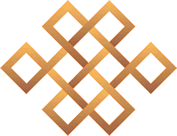
What to expect during your first visit
As an osteopath, Tim will want to get to the root cause of your pain by obtaining a full picture of your health, so at your first visit (known as 'the consultation') a detailed case history will be taken regarding the symptoms that motivated you to book the appointment. Tim will also need details of your past medical history. Tim will also ask for information about your diet, occupation and hobbies as they are all potentially relevant to your symptoms.
During the second part of the consultation, with your consent, Tim will conduct an examination of your spine and limbs, assessing how you undertake simple movements, then palpating any painful or restricted areas, and the range of movement available at individual joints. Depending on your presenting symptoms you may have your blood pressure checked and basic neurological tests may be carried out. All these elements will help Tim to make a diagnosis.
Tim will discuss the diagnosis with you (what he thinks is causing your symptoms) and the most appropriate treatment plan, estimating the likely number of sessions needed to treat your condition effectively. Tim will give you some advice on what you can do in the short term to manage your symptoms, and will likely give you some exercises to do in between sessions.
If Tim thinks that your condition is unlikely to respond to osteopathic treatment, you will be advised about how to seek further care. Osteopaths are skilled in diagnostic techniques and trained to identify when a patient needs to be referred to a GP or specialist - for example there are conditions which cause lower back pain, but have no musculo-skeletal dysfunction beyond the sensation of pain, and are therefore not suitable for osteopathic care.
The first consultation will last up to one hour. Subsequent treatment sessions will vary based on the diagnosis.
Do I need to undress?
As part of the second part of the consultation when assessing your spine and limbs, you will usually be asked to undress to your underwear so that the symptomatic area can be viewed in context with the rest of your body. Please wear underwear that adequately maintains your modesty. Below is some advice on specific items:
Bras: Sports Bras are not advised, simply because their elastic nature restricts movement, and their design covers important spinal areas.
Pants: Boxer Shorts are not advised, simply because they will not maintain your modesty. Trunk style pants, or elastin-rich cycling style shorts are advised.
If you feel uncomfortable about this at any stage please let Tim know, so that together you can work out what you are comfortable with. The most important thing is that you feel comfortable and as relaxed as possible, with respect for your right to modesty.
Many patients find it comfortable to bring shorts and a vest top to wear during treatment, and towels are available to cover any areas not being treated.
Finally, if you have long hair, please bring a hair tie; but not a plastic grip as this will be uncomfortable when lying in certain positions.
What do I need to bring, to help with diagnosing my condition?
If you have any relevant medical reports or x-ray/MRI images in your possession, they can be very helpful aids making a diagnosis, so please bring them with you, for Tim to review.
If you are prescribed regular medications by your GP or specialist, please bring a list of these medications.
The Techniques used by Osteopaths
Soft Tissue techniques
These techniques aim to soothe and relax tense muscles; drain excess lactic acid; reduce fibrotic changes in posturally altered muscles; improve lymphatic flow and drainage of venous blood from muscles.
Neuromuscular techniques
These techniques aim to change or rebalance the way nerves control the length or tension of muscles. Injury, postural distortion or stress cause nerves to speed up their transmission, inhibiting equilibrium and making the body vulnerable to pain and dysfunction. It is therefore necessary to stabilize low levels of neurological activity to maintain normal function and overall health.
Trigger point techniques
The primary purpose of trigger point therapy is to reduce the pain that results from hypersensitive muscles. Trigger points are identified by gently pressing on the surface of the skin, sensing the
texture of the underlying muscle.
A trigger point is like a knot the size of a pea, buried deep in the muscle tissue. It is made up of lactic acid, a normal byproduct of muscular activity, which sometimes gets trapped in the muscle
as a result of physical, chemical or emotional stress.
Mobilisation techniques
The healthy movement of joints throughout the body is essential for the maintenance of biomechanical balance. Osteopaths use their knowledge of anatomical and physiological biomechanics to assess the
relative movement of a patient's joints, and determine those which would benefit from increased movement. These gentle techniques are used to increase the range of movement of specific joints.

